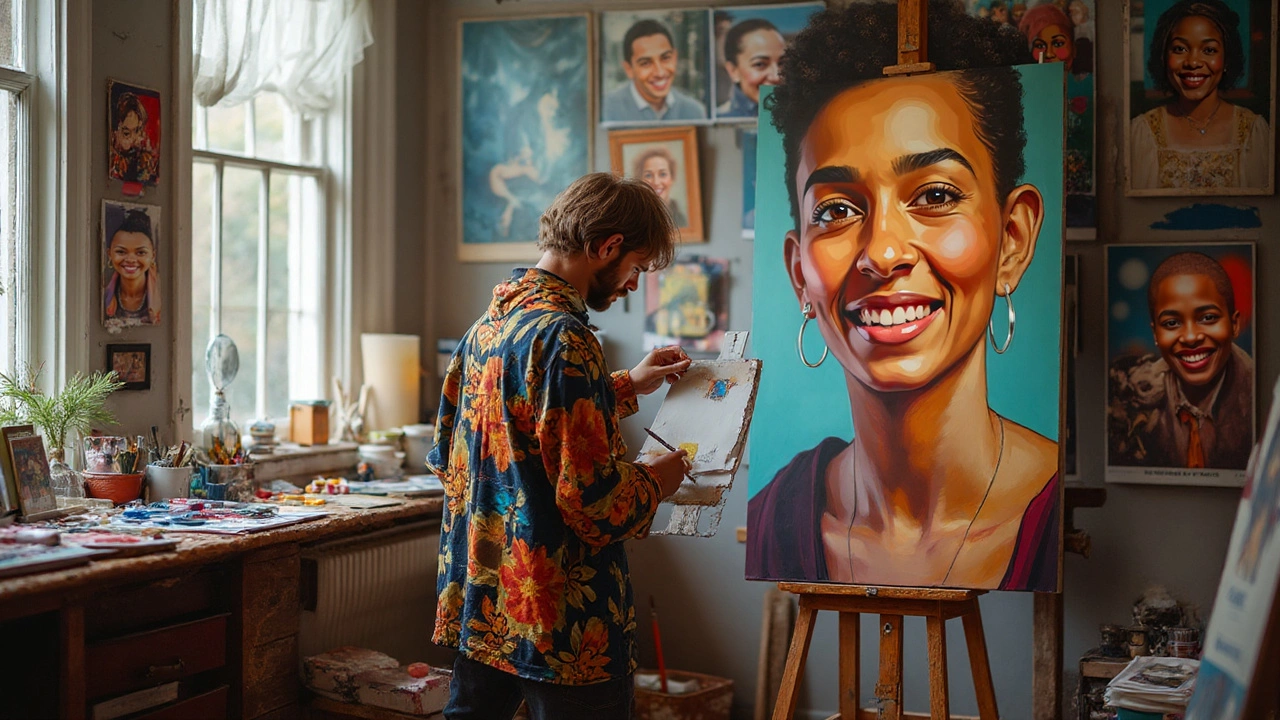Traditional Art – Why Classic Techniques Still Matter
When you think of art, the first images that pop up are often paintings, sketches, and sculptures made with hands‑on tools. That’s traditional art – the kind that’s been around for centuries and still feels fresh today. Whether you’re a total beginner or an experienced creator looking for solid basics, the old‑school methods can give you a strong foundation.
Core Skills Every Traditional Artist Needs
First up, mastering the basics of drawing and painting. Grab a simple sketchbook and a few pencils. Practice line work, shading, and proportion for just ten minutes a day. Those small drills turn shaky strokes into confident lines fast. Next, move to colour. Start with a basic palette of primary colours and learn how to mix them to get the hues you need. You’ll notice how quickly the right mix can bring a scene to life without relying on digital shortcuts.
Oil and acrylic paints each have their own tricks. If you’re worried about which one to pick, think about drying time. Oil takes days, giving you the freedom to blend on the canvas. Acrylic dries in minutes, perfect for quick layers. A handy tip: work wet‑on‑wet with oil to smooth transitions, and use glazing with acrylic for vibrant, layered effects.
Getting Hands‑On with Sculpture
Traditional art isn’t just flat surfaces. Sculpting lets you shape ideas in three dimensions. Start with cheap, easy materials like clay or even recycled objects. Simple projects – such as a small bust or a basic abstract form – teach you how to balance weight, add detail, and control texture. When you feel confident, you can graduate to sturdier materials like plaster or wood.
One common mistake is trying to make a perfect masterpiece on the first try. Instead, treat each piece as a learning experiment. Sketch your idea first, then build a rough armature, and finally add details. This step‑by‑step approach mirrors the process used by centuries‑old masters and keeps frustration at bay.
Traditional art also offers a clear path to understanding art history. When you study how Renaissance painters layered glazes or how classical sculptors carved marble, you pick up timeless problem‑solving tricks. Those insights can even improve modern digital work because the principles of light, colour, and form stay the same.
Feeling stuck? Look at real‑world examples. Articles like “How to Fix Mistakes in Oil Painting” show you how to rescue a slip without starting over. “Easiest Sculptures for Beginners” gives you project ideas that require only a few tools. And “What Does Abstract Art Really Mean?” helps you see how traditional skills can open doors to more experimental styles.
Bottom line: traditional art is a toolbox that never goes out of style. By spending time with pencils, brushes, and clay, you build muscle memory, sharpen your eye, and gain confidence to tackle any creative challenge. So grab that sketchbook, mix a fresh palette, and start shaping your own timeless works today.

7 Aug 2025
Explore the surprising world of modern portrait painters, discover how commissions work, unique stories behind painted portraits, and tips for getting your own masterpiece.
Continue reading...
